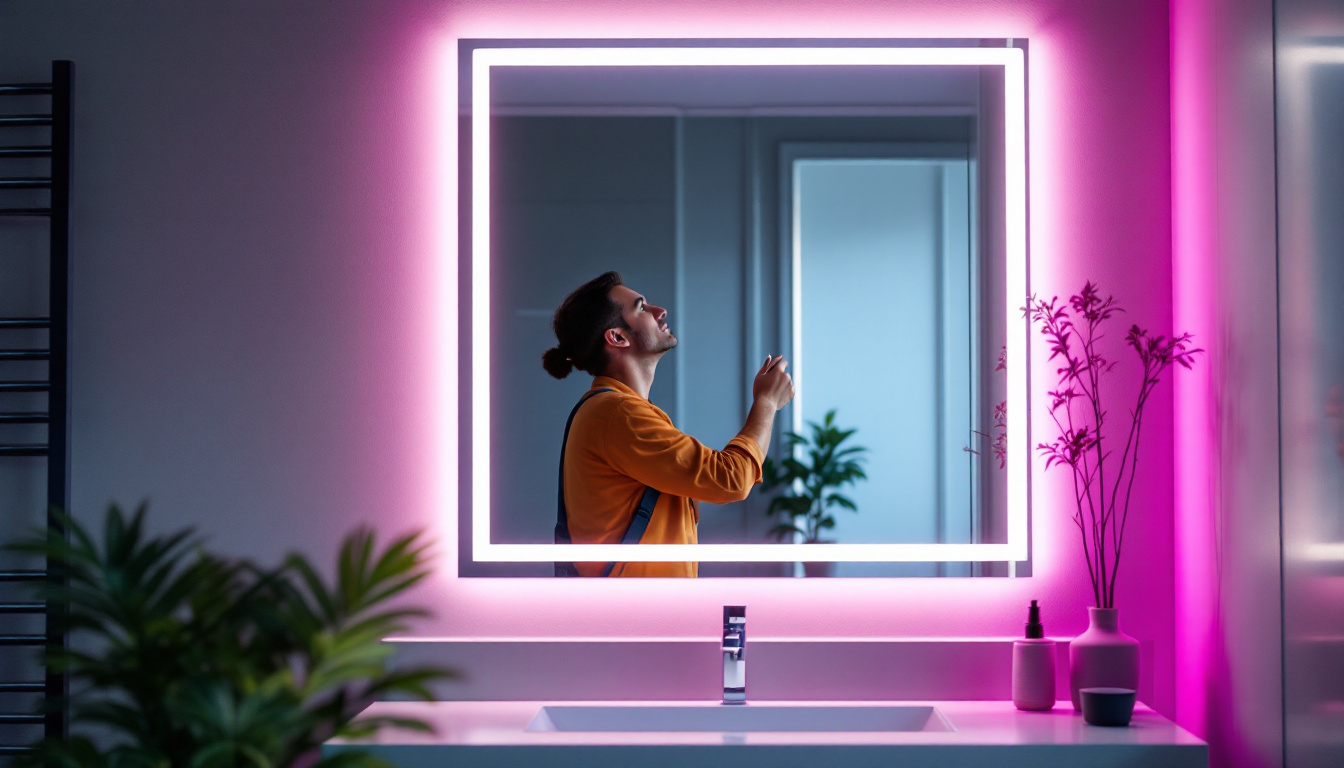
In the ever-evolving world of lighting design and installation, LED mirrors have emerged as a popular choice among homeowners and businesses alike. These innovative fixtures not only provide essential lighting but also add a touch of elegance and sophistication to any space. For lighting contractors, understanding the best practices for working with LED mirrors is crucial to delivering exceptional results and ensuring customer satisfaction. This article explores key considerations, installation tips, and maintenance practices for LED mirrors.
LED mirrors are designed to integrate lighting directly into the mirror surface, providing both illumination and functionality. They come in various styles, sizes, and features, making them suitable for diverse applications, from residential bathrooms to commercial settings. The combination of reflective surfaces and integrated lighting not only enhances visibility but also adds a touch of elegance to any environment. As technology advances, LED mirrors continue to evolve, offering innovative solutions that cater to the needs of users seeking both practicality and style.
There are several types of LED mirrors available on the market. Some of the most common include:
LED mirrors offer numerous advantages that make them a preferred choice for both contractors and clients:
Moreover, LED mirrors can also be equipped with adjustable brightness settings, allowing users to customize the lighting according to their preferences or the time of day. This feature is particularly beneficial for those who may need brighter light for detailed tasks in the morning or softer lighting for a relaxing evening routine. Additionally, many LED mirrors come with anti-fog technology, which prevents condensation from obscuring the reflection after a hot shower, making them not only stylish but also highly functional.
As the demand for smart home technology continues to rise, LED mirrors are increasingly being integrated into home automation systems. This means that users can control their mirrors through smartphone apps or home assistants, adding another layer of convenience and sophistication. With features like integrated speakers for music playback or even built-in cameras for video calls, the modern LED mirror is transforming the way we interact with our personal spaces, merging utility with cutting-edge technology.
proper installation of LED mirrors is critical to their performance and longevity. Following best practices can help ensure that the installation process is smooth and that the finished product meets client expectations.
Before installation, conducting a thorough site assessment is essential. This involves evaluating the space where the mirror will be installed, considering factors such as:
Additionally, it is advisable to consider the overall aesthetic of the room. The LED mirror should not only serve a functional purpose but also enhance the visual appeal of the space. Take note of the color scheme, existing decor, and how the mirror’s design aligns with the overall theme. For instance, a sleek, modern LED mirror may look out of place in a rustic setting. Furthermore, consider the potential for future renovations or changes in the space, as this may influence the mirror’s placement and style.
Correct mounting techniques are crucial for ensuring the stability and safety of LED mirrors. Here are some key considerations:
Moreover, it is beneficial to pre-drill holes for the mounting hardware to avoid damaging the wall and ensure a secure fit. If the mirror is equipped with additional features such as defoggers or lighting controls, plan the installation to allow easy access to these components. This foresight can save time and effort in the long run, especially when maintenance or repairs are needed. Lastly, always refer to the manufacturer’s installation instructions, as they may provide specific guidance tailored to the unique design and features of the mirror.
Electrical considerations are paramount when installing LED mirrors, particularly those that require hardwiring. Proper wiring ensures functionality and safety.
Before installation, contractors should familiarize themselves with the power requirements of the LED mirror. Most LED mirrors operate on a standard voltage, but some may have specific requirements that need to be addressed:
Safety should always be a priority when working with electrical installations. Here are a few essential safety precautions:
To ensure the longevity and optimal performance of LED mirrors, regular maintenance and care are essential. Educating clients on proper care can enhance their satisfaction and prolong the life of the product.
Cleaning LED mirrors requires a gentle approach to avoid damaging the surface or the lighting components. Here are some effective cleaning techniques:
Encouraging clients to perform regular inspections of their LED mirrors can help identify potential issues early on. Key areas to check include:
Effective communication with clients is vital for ensuring their satisfaction and understanding of the product. Providing education on LED mirrors can help clients appreciate their value and functionality.
During the consultation process, take the time to explain the features and benefits of LED mirrors to clients. Highlight aspects such as:
After installation, provide clients with clear guidance on how to care for their LED mirrors. This can include:
LED mirrors represent a significant advancement in lighting design, offering both functional and aesthetic benefits. For lighting contractors, mastering the best practices associated with LED mirror installation, maintenance, and client education is essential for success in this competitive industry. By understanding the nuances of LED mirrors and effectively communicating their value to clients, contractors can enhance their reputation and drive business growth.
As the demand for innovative lighting solutions continues to rise, staying informed about the latest trends and best practices will empower contractors to deliver exceptional service and products. Embracing the potential of LED mirrors can lead to satisfied clients and a thriving business.
Ready to elevate your lighting installations with the sleek sophistication of LED mirrors? Look no further than LumenWholesale for all your lighting needs. Our commitment to quality and affordability ensures that you can provide your clients with the best lighting solutions without breaking the bank. With our extensive selection of spec-grade lighting products, free shipping on bulk orders, and no middleman markups, you’re guaranteed to find the perfect lighting fixtures for any project. Take the next step in enhancing your lighting business and discover wholesale lighting at the best value today!

Discover how lighting contractors can enhance their projects with low bay LED lighting solutions.

Discover how linear high bay lighting is revolutionizing the lighting industry with its energy efficiency, superior illumination, and versatile design.

Discover the top strategies lighting contractors use to maximize the efficiency and aesthetics of outdoor solar lamps.

Discover the Metal Halide To LED Conversion Chart and learn what sets top lighting contractors apart.